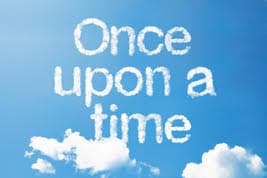6 Secrets: Making Your Hospital Storytelling Great
 Every contemporary textbook about hospital and healthcare marketing deserves a robust chapter about the art of storytelling. Nearly everything that professional communicators do involves telling a compelling story, usually with the goal of engaging an audience and inspiring an action.
Every contemporary textbook about hospital and healthcare marketing deserves a robust chapter about the art of storytelling. Nearly everything that professional communicators do involves telling a compelling story, usually with the goal of engaging an audience and inspiring an action.
From a one-to-one conversation between doctor and patient, to the focused interests of a social media community, to highly diverse viewers in a broadcast television audience, good storytelling:
- Engages attention and makes connections
- Inspires vision and imagination
- Explains for easier understanding
- Provokes responses and actions
- Makes the message memorable
- Becomes sharable fuel for re-telling
And, when storytelling is effective, it supports the communications goals and objectives from brand building to patient compliance.
The primary secret ingredient—the element that makes stories great—is empathy or creating an emotional connection between the storyteller and the audience. When people feel something in the range of human emotions, the message becomes engaging, trust forms and a relationship begins. What’s more, emotional stories abound in the human-world of hospitals.
- People relate to other people. Shape ideas, facts and clinical information around people and human values and the values that are important to the audience.
- Images amplify words. A good verbal storyteller can carry the day, but whenever appropriate, incorporate pictures and visual elements for added impact.
- Begin with the end in mind. Classic story structure has a Beginning (to establish background and context), a Middle (where a problem or conflict appears), and an End (which resolves the conflict or issue). Know payoff and build to it.
- Make it short and sweet. Leave the long-form to novels, and present your story in an easy to digest format that resolves to one main point.
- Rehearse, test drive and revise as needed. What works in our brain may not process the same way with any given audience. Be flexible about making adjustments as appropriate to the audience.
The art of storytelling is a powerful, but sometimes underutilized, means to inform and persuade. A good story is experiential, easily remembered and an effective tool for hospital marketing and patient satisfaction. What’s more, it’s free.
For related articles, see our previous posts titled: Storytelling: Give Your Medical Office a Narrative Voice, and Neurochemistry and the Art and Science of Storytelling.
Janet Bowden








